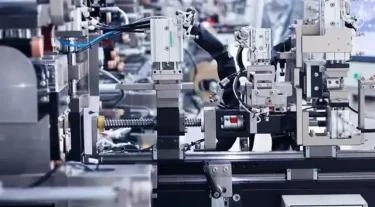
# Tape Production Process and Techniques
## Introduction to Tape Manufacturing
Tape manufacturing is a complex process that involves multiple stages to create adhesive products for various applications. From everyday household uses to industrial applications, tapes serve numerous purposes in our modern world. The production process combines material science, engineering, and precision manufacturing techniques to create reliable adhesive solutions.
## Raw Materials Selection
The tape production process begins with careful selection of raw materials. Manufacturers typically use:
– Backing materials (paper, plastic films, cloth, or foil)
– Adhesive compounds (rubber-based, acrylic, or silicone)
– Release liners (for pressure-sensitive tapes)
– Additives (to enhance specific properties)
## The Production Process
### 1. Backing Material Preparation
The first step involves preparing the backing material. This may include:
– Extruding plastic films
– Weaving or knitting fabric backings
– Treating surfaces for better adhesive bonding
– Applying primers or coatings
### 2. Adhesive Application
There are several methods for applying adhesive to the backing material:
– Solution coating (adhesive dissolved in solvent)
– Hot melt coating (thermoplastic adhesives)
– Water-based coating (environmentally friendly option)
– 100% solids coating (no solvents or water)
### 3. Drying and Curing
After application, the adhesive must be properly dried or cured:
– Solvent evaporation in drying ovens
– UV or electron beam curing for certain adhesives
– Thermal curing for heat-activated adhesives
### 4. Laminating and Converting
The final steps include:
– Applying release liners (if needed)
– Slitting the material into desired widths
– Winding onto cores
– Packaging for distribution
## Advanced Manufacturing Techniques
Modern tape production incorporates several advanced techniques:
### Precision Coating Technologies
– Multi-layer coating for complex tape structures
– Micro-patterned adhesives for specialized applications
– Nano-coating technologies for enhanced performance
### Quality Control Measures
– Automated inspection systems
– Real-time thickness monitoring
– Adhesion strength testing
– Environmental resistance testing
## Environmental Considerations
Tape manufacturers are increasingly focusing on sustainable practices:
– Using bio-based adhesives
– Implementing solvent recovery systems
– Developing recyclable tape products
– Reducing energy consumption in production
## Future Trends in Tape Manufacturing
The industry continues to evolve with new developments:
– Smart tapes with embedded sensors
– Biodegradable adhesive formulations
– High-performance tapes for extreme conditions
– Customizable adhesive properties
The tape manufacturing process combines traditional techniques with modern innovations to create products that meet diverse needs across industries. As technology advances, we can expect to see even more sophisticated tape products with enhanced performance characteristics.
Keyword: tape manufacturing